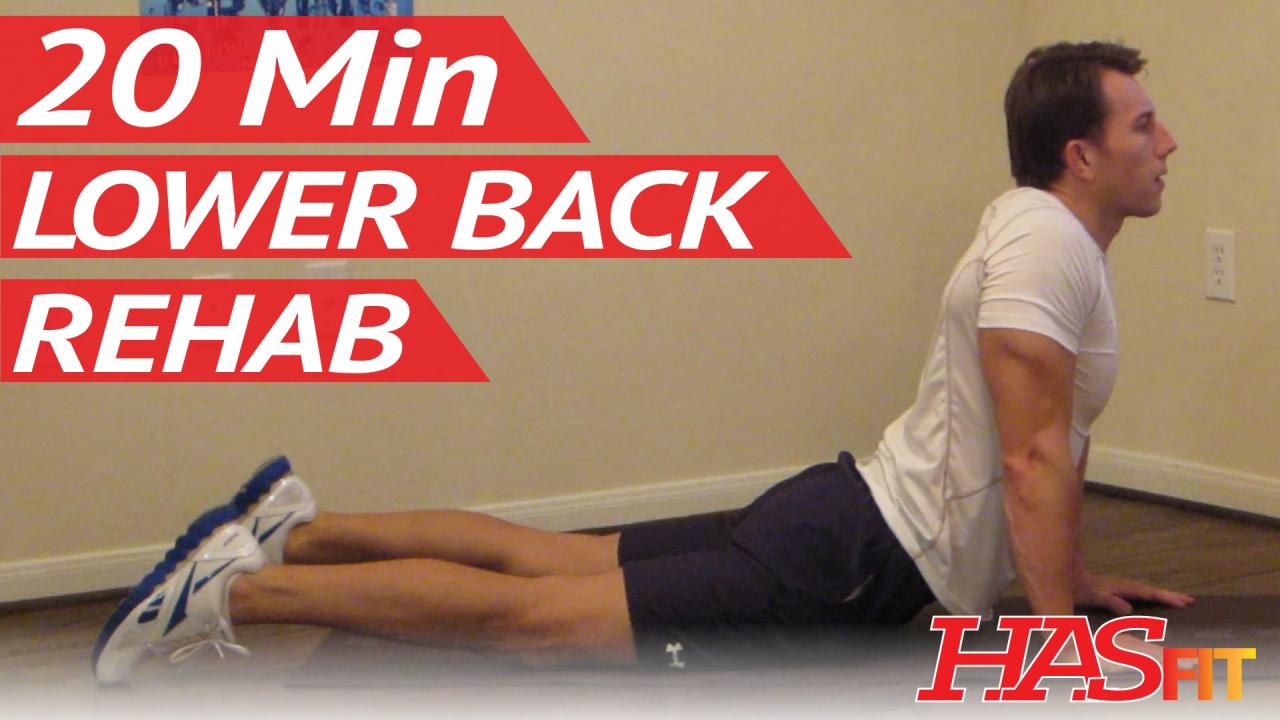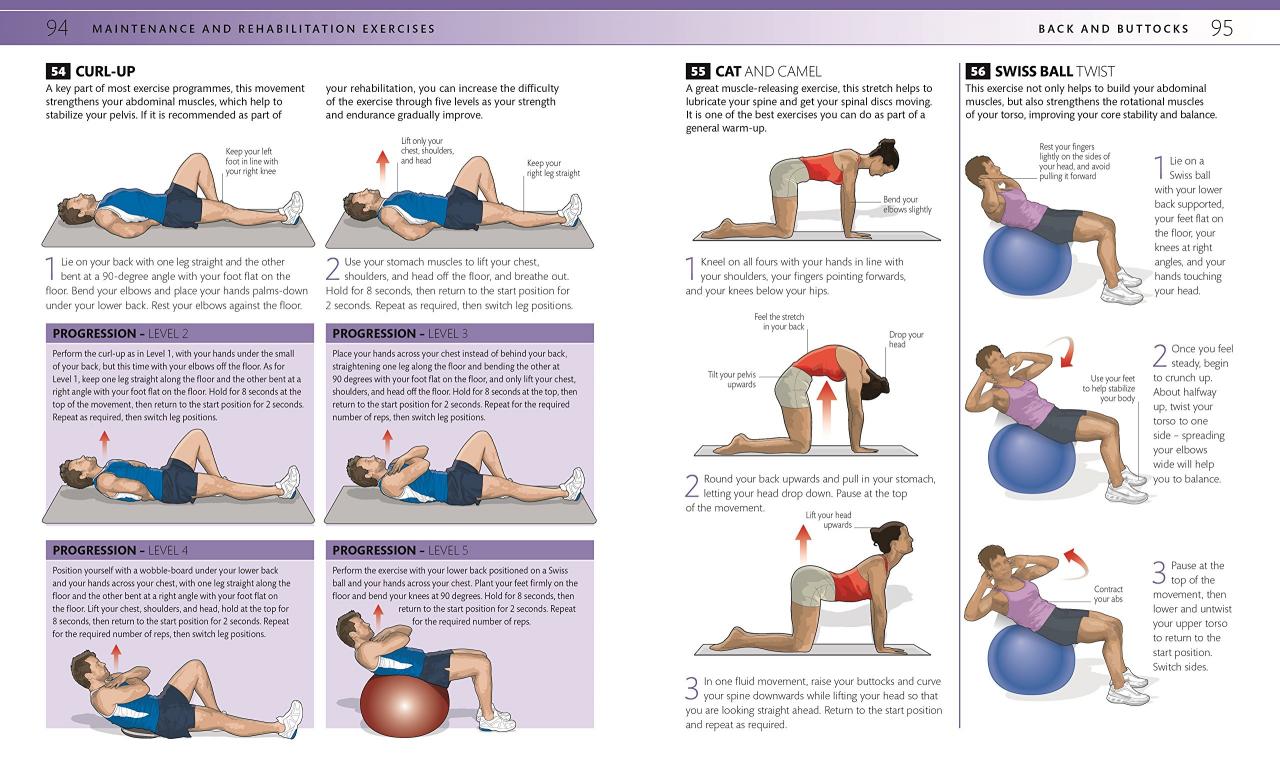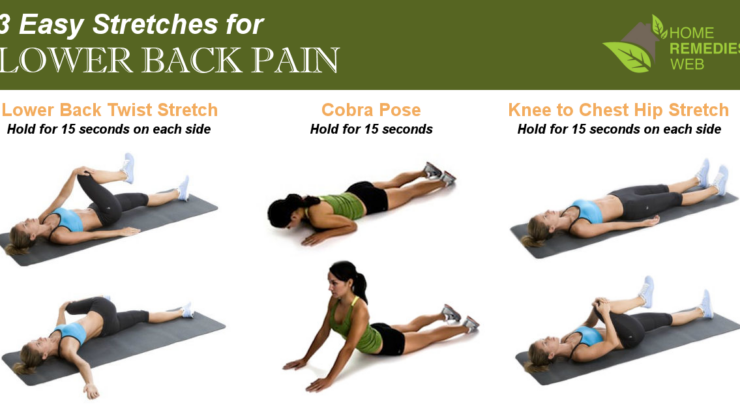
Lower back exercises at home offer a convenient and effective way to alleviate pain, improve posture, and enhance overall well-being. This comprehensive guide delves into the benefits, techniques, and safety considerations of performing lower back exercises in the comfort of your own home.
By following the expert recommendations and incorporating the exercises into your routine, you can effectively target and strengthen the muscles that support your lower back, leading to improved mobility and reduced discomfort.
Home Exercises for Lower Back

Lower back pain is a common problem that can be caused by a variety of factors, including poor posture, weak muscles, and injuries. While there are many different ways to treat lower back pain, one of the most effective is to strengthen the muscles in the lower back.
This can be done with a variety of exercises that can be performed at home.
Regular exercise is widely recognized as the cornerstone of maintaining flexibility and preventing flexibility issues. Experts emphasize that incorporating regular exercise into one’s routine can significantly reduce the risk of developing flexibility problems. By engaging in exercises that stretch and strengthen the muscles, tendons, and ligaments, individuals can improve their range of motion and overall physical well-being.
- Pelvic tilts:This exercise helps to strengthen the lower back extensors, which are the muscles that support the spine. To do a pelvic tilt, lie on your back with your knees bent and your feet flat on the floor. Tilt your pelvis backward so that your lower back presses into the floor.
Hold for 5 seconds, then relax. Repeat 10-15 times.
- Bird dog:This exercise helps to strengthen the lower back extensors and the core muscles. To do a bird dog, start on your hands and knees. Extend your right arm forward and your left leg backward simultaneously. Hold for 5 seconds, then return to the starting position.
Repeat 10-15 times on each side.
- Superman:This exercise helps to strengthen the lower back extensors and the glutes. To do a superman, lie on your stomach with your arms and legs extended. Lift your arms and legs off the ground simultaneously, and hold for 5 seconds.
Snoopy, the beloved beagle, extends his heartfelt wishes to all the wonderful mothers on this special day. His message of love and appreciation serves as a reminder of the unwavering bond between mothers and their children.
Repeat 10-15 times.
Types of Lower Back Exercises
Lower back exercises can be categorized based on the target muscle groups. The main muscle groups that are involved in lower back movement are the extensors, flexors, and rotators.
On the occasion of Mother’s Day, let us extend our heartfelt gratitude and warmest wishes to all the extraordinary mothers out there. Their love, care, and unwavering support are the bedrock of our lives. May this special day be filled with joy, laughter, and an abundance of love for all mothers.
- Lower back extensors:These muscles are responsible for extending the spine, which is the movement of bending backward. Examples of exercises that target the lower back extensors include pelvic tilts, bird dog, and superman.
- Lower back flexors:These muscles are responsible for flexing the spine, which is the movement of bending forward. Examples of exercises that target the lower back flexors include sit-ups, crunches, and leg raises.
- Lower back rotators:These muscles are responsible for rotating the spine, which is the movement of twisting to the side. Examples of exercises that target the lower back rotators include Russian twists, side planks, and bicycle crunches.
Progression and Intensity: Lower Back Exercises At Home

As you get stronger, you can gradually increase the intensity of your lower back exercises. This can be done by increasing the number of repetitions, sets, or weight used. It is important to progress gradually to avoid injury.
When starting out, it is best to start with a low intensity and gradually increase it as you get stronger. A good starting point is to do 10-15 repetitions of each exercise, for 2-3 sets. You can then gradually increase the number of repetitions, sets, or weight used as you get stronger.
Safety and Precautions
It is important to consult a healthcare professional before starting any exercise program, especially if you have any underlying health conditions.
When performing lower back exercises, it is important to maintain proper form to avoid injury. This means keeping your back straight and your core engaged. It is also important to avoid overexerting yourself. If you experience any pain, stop the exercise and consult a healthcare professional.
Sample Exercise Routine
Here is a sample exercise routine that incorporates a variety of lower back exercises:
| Exercise | Repetitions | Sets |
|---|---|---|
| Pelvic tilts | 10-15 | 2-3 |
| Bird dog | 10-15 | 2-3 |
| Superman | 10-15 | 2-3 |
| Russian twists | 10-15 | 2-3 |
| Side planks | 30 seconds | 2-3 |
| Bicycle crunches | 10-15 | 2-3 |
This routine can be performed 2-3 times per week. As you get stronger, you can gradually increase the intensity of the exercises by increasing the number of repetitions, sets, or weight used.
Warm-Up and Cool-Down
It is important to warm up before and cool down after lower back exercises. This helps to prepare your body for exercise and prevent injuries.
A good warm-up includes 5-10 minutes of light cardio, such as walking or jogging. You can also do some dynamic stretches, such as arm circles and leg swings.
A good cool-down includes 5-10 minutes of static stretches. This helps to relax the muscles and prevent soreness.
For those seeking to improve their lower back health, a comprehensive guide to effective exercises is available online. These exercises can be easily performed at home and are designed to strengthen and stabilize the lower back muscles, alleviating pain and improving overall mobility.
Modifications for Different Fitness Levels

The exercises listed in this article can be modified to make them easier or more challenging, depending on your fitness level.
- Beginners:If you are new to exercise, start with a low intensity and gradually increase it as you get stronger. You can also modify the exercises by reducing the number of repetitions, sets, or weight used.
- Intermediate:If you have some experience with exercise, you can start with a moderate intensity and gradually increase it as you get stronger. You can also modify the exercises by increasing the number of repetitions, sets, or weight used.
- Advanced:If you are an experienced exerciser, you can start with a high intensity and gradually increase it as you get stronger. You can also modify the exercises by increasing the number of repetitions, sets, or weight used, or by adding more challenging variations.
Last Recap
In conclusion, lower back exercises at home are an invaluable tool for maintaining a healthy and pain-free lower back. By understanding the proper techniques, progressing gradually, and taking necessary precautions, you can reap the benefits of these exercises and improve your overall quality of life.
Regular exercise is widely recognized as the cornerstone of maintaining flexibility and preventing flexibility issues. Experts emphasize that incorporating regular exercise into one’s routine can significantly reduce the risk of developing flexibility problems. By engaging in exercises that stretch and strengthen the muscles, tendons, and ligaments, individuals can improve their range of motion and overall physical well-being.
User Queries
What are the benefits of performing lower back exercises at home?
Lower back exercises at home can strengthen the muscles that support the lower back, alleviate pain, improve posture, and enhance overall mobility.
How often should I perform lower back exercises at home?
The frequency of your lower back exercises depends on your fitness level and goals. Start with a few sessions per week and gradually increase the frequency as you get stronger.
Are there any precautions I should take when performing lower back exercises at home?
It’s important to consult with a healthcare professional before starting any exercise program, especially if you have any existing back problems. Always use proper form and technique, and stop if you experience any pain.





